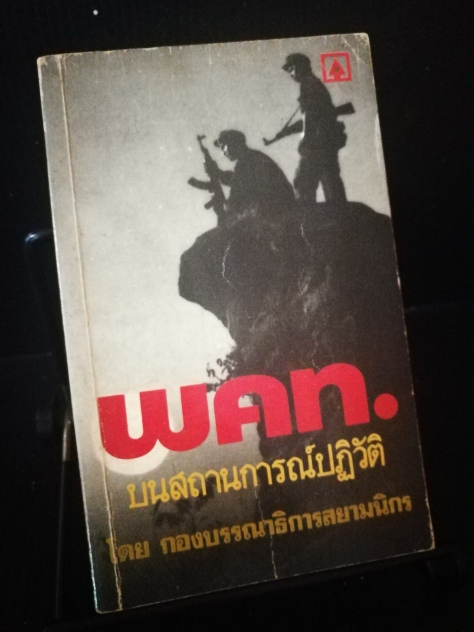Giles Ji Ungpakorn
Tong Jamsee (Thong Jamsri), the last Secretary General of the Communist Party of Thailand (CPT) died this month at the age of 98.

Once a beacon of hope for all those struggling against the Thai dictatorship in the 1970s, the CPT ceased to exist as an active organisation in the mid-1980s, when the student activists, who had joined the CPT in the jungle after the 6th October 1976, returned to the city. Changes in the geo-political climate, ending in the fall of the Berlin Wall, were also responsible for the decline of the CPT. [See “The rise and fall of the CPT” https://bit.ly/32wXO8v ].
At the end of 2009, a split among the old remaining CPT members occurred, mirroring the deep divisions in Thai society between the red and yellow shirts. One section joined the royalist, pro-military dictatorship, yellow shirts, under the ridiculous claim that Taksin Shinawat, as a “monopoly capitalist” was the number one enemy. To his credit, Tong Jamsee denounced these people and sided with the pro-democracy red shirts. The red shirts were mainly made up of ordinary working people in the cities and the rural areas. The yellow shirts were middle-class and reactionary.
Unfortunately Tong Jamsee’s main reasoning was that people ought to side with Taksin, as a “progressive capitalist”, rather than the need to side with workers and small farmers and to build a movement independent of people like Taksin.
Tong Jamsee wrote in 2009 that Thailand was “now” a capitalist society under the control of the “Feudal Monopoly Capitalist Class”. He argued that Thailand was a “new absolute monarchy” and that Taksin was a “liberal free-market capitalist”.

For years the CPT had argued, along Stalinist-Maoist lines, that Thailand was a “Semi-feudal, Semi-Colonial” country and that the task of the CPT was to push forward with the “National Democratic” revolution to establish capitalism. This meant relegating the struggle for socialism to the distant future and the need to build a national alliance with the capitalist class against the feudalists. This was the same argument put forward by Stalinist-Maoist parties all over the world. It arose from Stalin’s emphasis on “Socialism in One Country” and the need to defend the Soviet Union at the expense of a world-wide socialist revolution. [See “The Failure of Stalinist Ideology and the Communist Parties of Southeast Asia” https://bit.ly/1OEfsJo ].
In a perverse and distorted way, the reasoning of the CPT members who joined with the yellow shirts also arose from the CPT’s emphasis of cross-class alliances and the rejection of the central role of the working class and peasantry in the struggle for a socialist revolution from below. This view was also shared by ex-CPT NGO activists who joined the yellow shirts.
Tong Jamsee retained much of the CPT analysis and emphasis on cross-class alliances, but argued that Thailand was no longer a colony of the USA since the withdrawal of US troops in 1976. As a result of retaining the basics of the CPT analysis, his statement in 2009 that Thailand was now “capitalist” was 140 years out of date, since the first Thai capitalist state was established under king Chulalongkorn in the 1870s. [See “Thailand’s Crisis and the Fight for Democracy ” http://bit.ly/1TdKKYs ]. His analysis that Thailand was a new absolute monarchy was also wildly inaccurate and reflects the views of those who exaggerate the power of the monarchy. [See “Wachiralongkorn’s power” https://bit.ly/2EOjsNL “Absolutism” https://bit.ly/2teiOzQ ].
Tong Jamsee appears to have the ability to scare the Thai ruling class even after his death. Many activists who attended his funeral have been paid visits by the junta’s police.

The strengths of the CPT and Tong Jamsee do not lie with their flawed analysis of Thai society or the lack of internal democracy within the party. Their strengths lie in the way that the CPT placed importance on building a militant mass party of the left, which was not pre-occupied with parliament, while at the same time attempting to put forward a unified analysis of politics.
Today Thailand desperately needs such a party, built by a new generation of activists who are prepared to learn lessons from the past.
